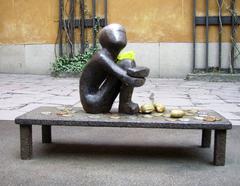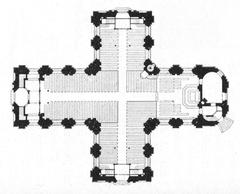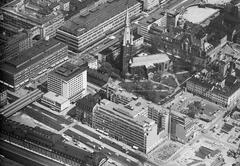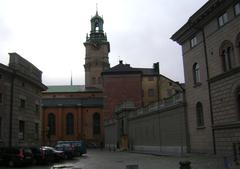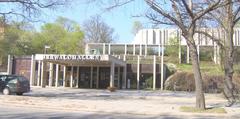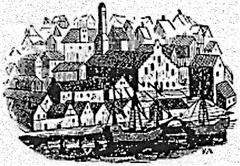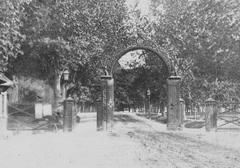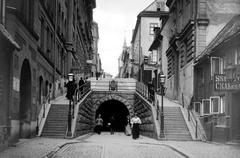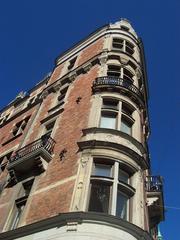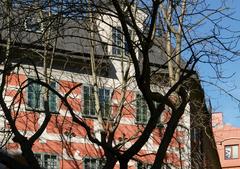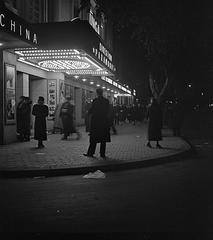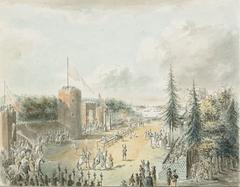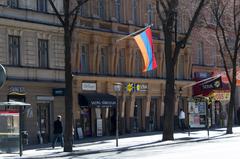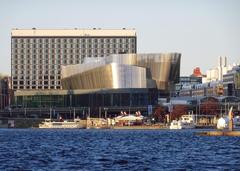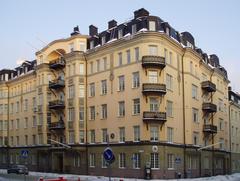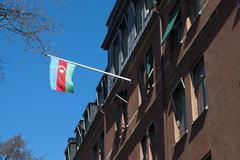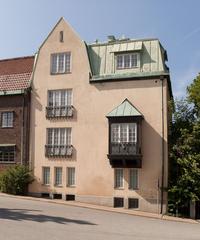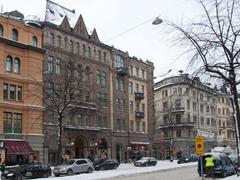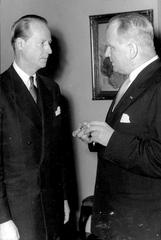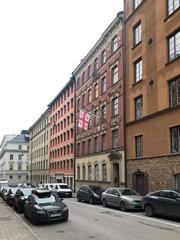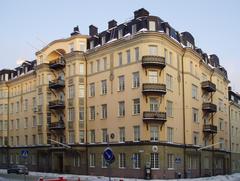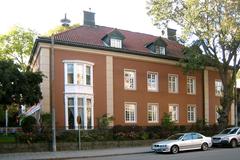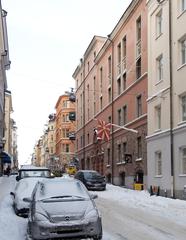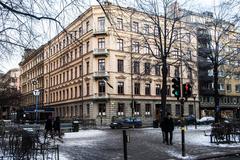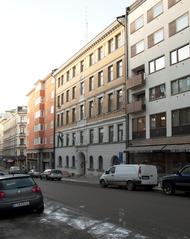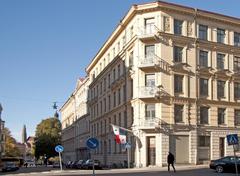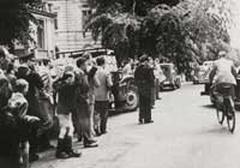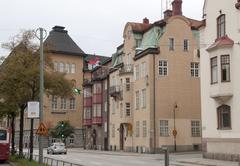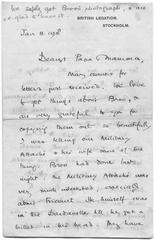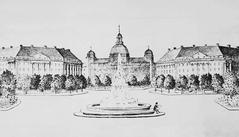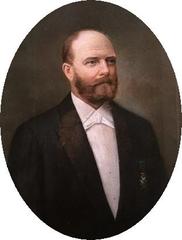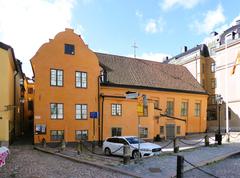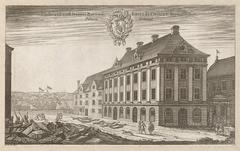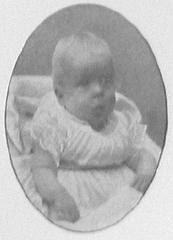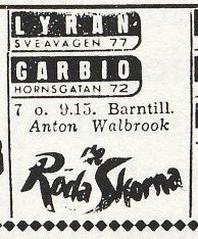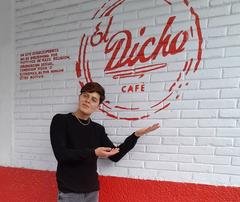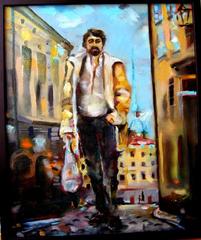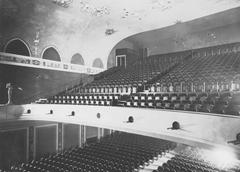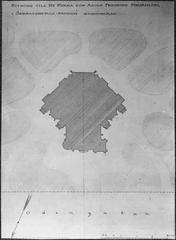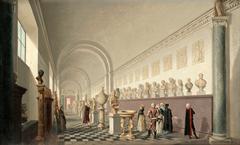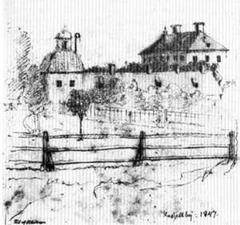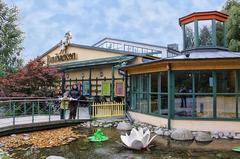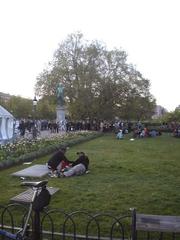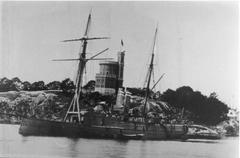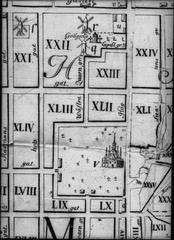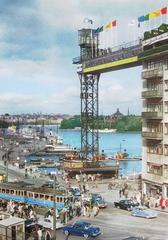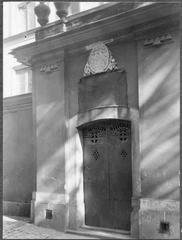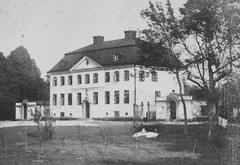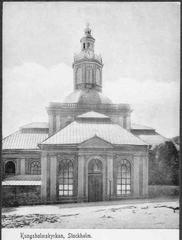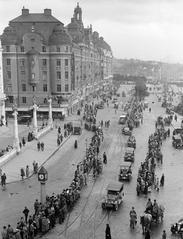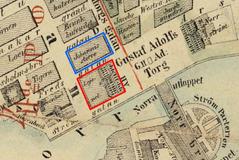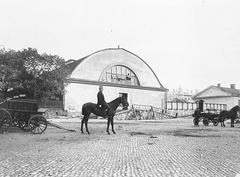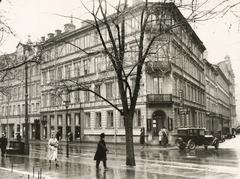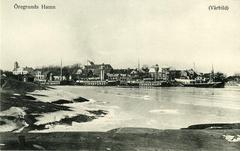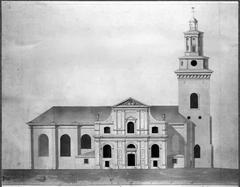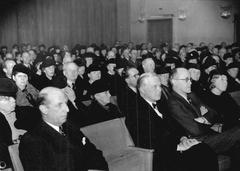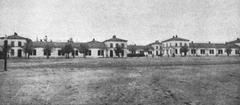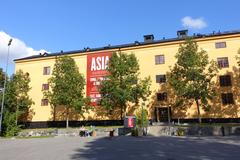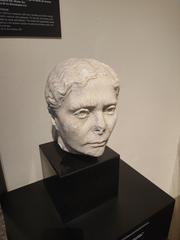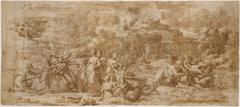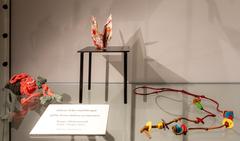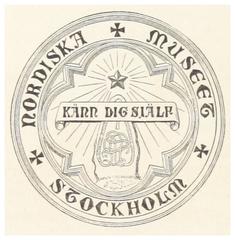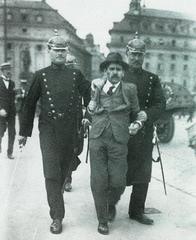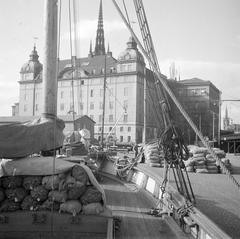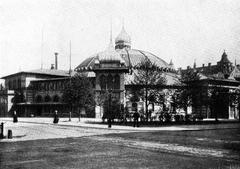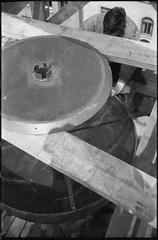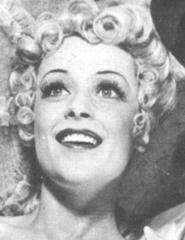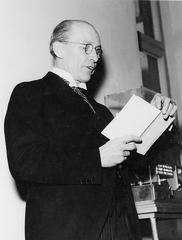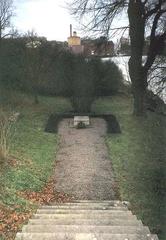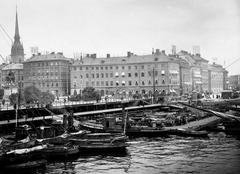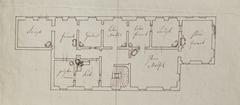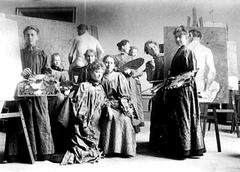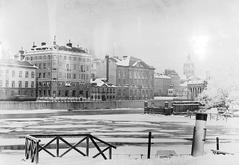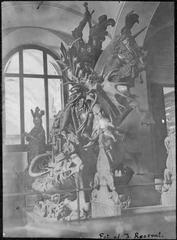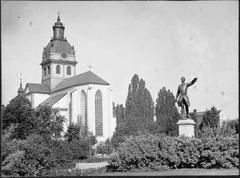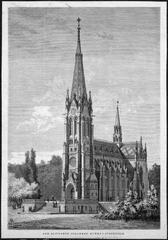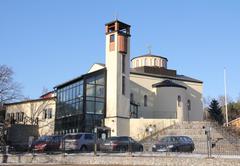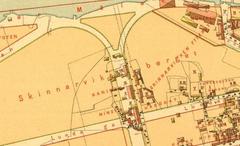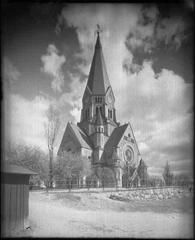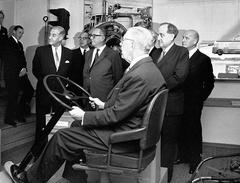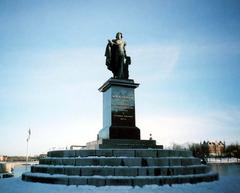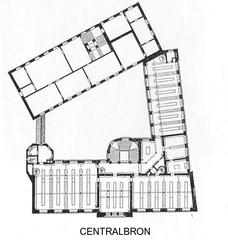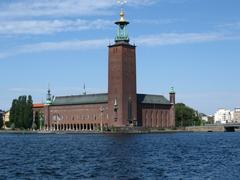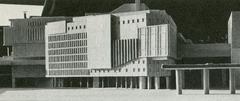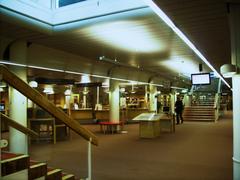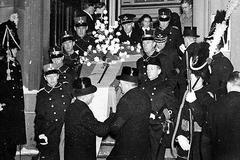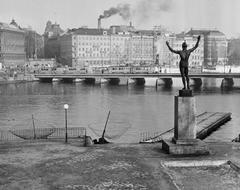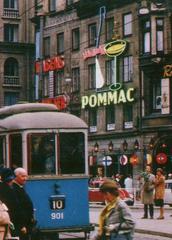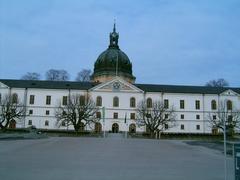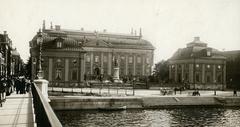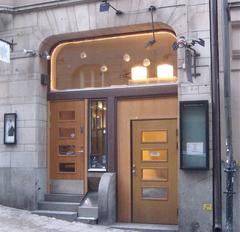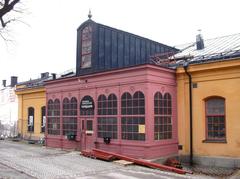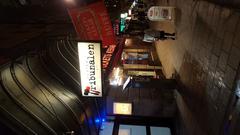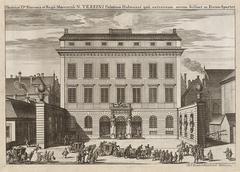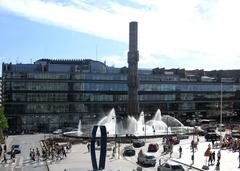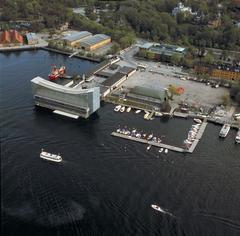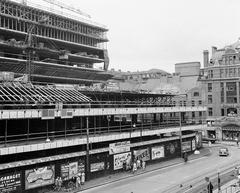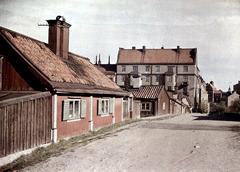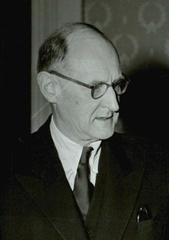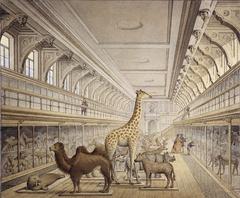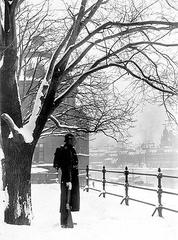
Comprehensive Guide to Visiting Järnpojke, Stockholm, Sweden
Date: 24/07/2024
Introduction
Stockholm, the capital of Sweden, is a city renowned for its rich history and cultural landmarks. Among these, the Järnpojke sculpture, also known as the “Iron Boy” or “The Little Boy Who Looks at the Moon,” stands out as a unique and cherished monument. Created by Swedish artist Liss Eriksson in 1954 and inaugurated in 1967, Järnpojke is the smallest public monument in Stockholm, standing at just 15 centimeters tall. The sculpture’s diminutive size belies its significant cultural impact, symbolizing hope, introspection, and communal affection. (Wikipedia, Nomad Women). Situated in Gamla Stan, Stockholm’s historic Old Town, behind the Finnish Church, Järnpojke is a hidden gem that offers visitors a moment of quiet reflection amidst the bustling city. This guide provides comprehensive insights into the history, cultural significance, and practical tips for visiting Järnpojke, ensuring a memorable experience for all who seek out this endearing statue. (Take Me to Sweden, Sweden Tips).
Table of Contents
- [Discover Järnpojke - History, Visiting Tips, and Cultural Significance in Stockholm](#discover-järnpojke---history-visiting-tips-and-cultural-significance-in-stockholmdiscover-järnpojke---history-visiting-tips-and-cultural-significance-in-stockholm)
- [Creation and Inauguration](#creation-and-inaugurationcreation-and-inauguration)
- [Physical Characteristics](#physical-characteristicsphysical-characteristics)
- [Location and Accessibility](#location-and-accessibilitylocation-and-accessibility)
- [Visiting Hours and Ticket Prices](#visiting-hours-and-ticket-pricesvisiting-hours-and-ticket-prices)
- [How to Get There](#how-to-get-therehow-to-get-there)
- [Nearby Attractions](#nearby-attractionsnearby-attractions)
- [Accessibility](#accessibilityaccessibility)
- [Special Events and Guided Tours](#special-events-and-guided-toursspecial-events-and-guided-tours)
- [Cultural Significance](#cultural-significancecultural-significance)
- [Seasonal Traditions](#seasonal-traditionsseasonal-traditions)
- [Artistic Context](#artistic-contextartistic-context)
- [Popularity and Visitor Experience](#popularity-and-visitor-experiencepopularity-and-visitor-experience)
- [Symbolism and Interpretation](#symbolism-and-interpretationsymbolism-and-interpretation)
- [FAQ](#faqfaq)
- [Conclusion](#conclusionconclusion)
- [References](#referencesreferences)
Discover Järnpojke - History, Visiting Tips, and Cultural Significance in Stockholm
Creation and Inauguration
Järnpojke, also known as the “Iron Boy” or “The Little Boy Who Looks at the Moon,” is a sculpture created by Swedish artist Liss Eriksson in 1954. Despite its creation in the mid-20th century, the sculpture was not inaugurated until 1967. Eriksson, born in 1919, was a prominent Swedish sculptor whose works often reflected a deep sense of introspection and human emotion. The inspiration for Järnpojke came to Eriksson one sleepless night as he sat on the windowsill of his mother’s kitchen, contemplating the night sky. (Wikipedia).
Physical Characteristics
Järnpojke is renowned for being the smallest public monument in Stockholm, standing at a mere 15 centimeters (5.9 inches) in height. The sculpture depicts a small boy sitting on an iron bench with his legs pulled up and his arms wrapped around his knees, gazing upwards as if looking at the moon. This poignant pose has earned the sculpture its alternative name, “The Boy Who Looks at the Moon.” (Nomad Women).
Location and Accessibility
The sculpture is located in Gamla Stan, Stockholm’s Old Town, behind the Finnish Church (Finska kyrkan) on Slottsbacken. Despite its proximity to major landmarks such as the Stockholm Palace and the Stockholm Cathedral (Storkyrkan), Järnpojke is somewhat hidden and can be challenging to find. This secluded placement adds to its charm, making it a “secret attraction” that is often missed by casual tourists. (Take Me to Sweden).
Visiting Hours and Ticket Prices
Järnpojke is accessible 24/7, but it is best visited during daylight hours for better visibility. Visiting Järnpojke is free of charge.
How to Get There
Järnpojke is located in Gamla Stan, Stockholm’s Old Town. It’s a short walk from major landmarks like Stockholm Palace and Storkyrkan. The nearest metro station is Gamla Stan.
Nearby Attractions
While you’re in the area, visit the Stockholm Palace, Storkyrkan, and the Nobel Museum.
Accessibility
The sculpture is located in a small square that is accessible by foot. However, the cobblestone streets of Gamla Stan might be challenging for those with mobility issues.
Special Events and Guided Tours
Occasionally, guided tours in Gamla Stan include a stop at Järnpojke. Check with local tour operators for more details.
Cultural Significance
Järnpojke holds a special place in the hearts of both locals and visitors. It is not just a piece of art but a symbol of good luck and affection. Many people believe that caressing the boy’s head or leaving small gifts will bring them good fortune. Over the years, the sculpture’s head has become polished from the countless hands that have touched it, a testament to its popularity and the affection it receives. (Sweden Tips).
Seasonal Traditions
One of the endearing aspects of Järnpojke is the way it is dressed according to the seasons. In the winter, the little boy is often found wearing a hand-knitted scarf and hat to keep him warm. During the summer, he might don a sun hat. These seasonal adornments are usually provided by locals and visitors who feel a personal connection to the sculpture. This tradition adds a layer of communal interaction and care, making Järnpojke a living part of the community rather than just a static piece of art. (Nomad Women).
Artistic Context
Liss Eriksson’s decision to create Järnpojke was influenced by his desire to add a touch of whimsy and introspection to the urban landscape. Eriksson’s studio overlooked the square where the sculpture now stands, and he wanted to create something that would brighten up his view and the lives of those who passed by. The sculpture’s small size and contemplative pose invite viewers to pause and reflect, offering a moment of quiet in the bustling city. (Atlas Obscura).
Popularity and Visitor Experience
Despite its small size, Järnpojke is one of the most visited public works of art in Sweden. Its hidden location means that finding it can feel like a treasure hunt, adding to the sense of discovery and delight when it is finally found. Visitors often take photos with the sculpture, leave small tokens, and make wishes, contributing to its status as a beloved landmark. The sculpture’s popularity is evident from the numerous travel blogs and guides that mention it as a must-see attraction in Stockholm. (Take Me to Sweden).
Symbolism and Interpretation
Järnpojke’s pose and expression have been interpreted in various ways. Some see the boy’s upward gaze as a symbol of hope and aspiration, while others view it as a moment of quiet contemplation. The sculpture’s small size can be seen as a reminder of the vulnerability and innocence of childhood. Eriksson’s work invites viewers to project their own emotions and thoughts onto the sculpture, making it a deeply personal and evocative piece of art. (Wikipedia).
FAQ
Is there an entry fee to see Järnpojke? No, visiting Järnpojke is free of charge.
What are the best times to visit Järnpojke? Järnpojke is accessible 24/7, but it is best visited during daylight hours for better visibility.
Are there guided tours that include Järnpojke? Occasionally, guided tours in Gamla Stan include a stop at Järnpojke. Check with local tour operators for more details.
Is Järnpojke accessible for people with disabilities? The sculpture is located in a small square that is accessible by foot. However, the cobblestone streets of Gamla Stan might be challenging for those with mobility issues.
Conclusion
Järnpojke, with its rich history, cultural significance, and endearing traditions, is more than just a sculpture. It is a cherished part of Stockholm’s cultural landscape, inviting both locals and visitors to engage with it in a meaningful way. Whether you are making a wish, leaving a gift, or simply pausing to reflect, Järnpojke offers a unique and memorable experience that captures the heart and imagination. (Atlas Obscura, Visit Stockholm).
References
- Nomad Women, 2024
- Take Me to Sweden, 2024
- Wikipedia, 2024
- Sweden Tips, 2024
- Atlas Obscura, 2024
- Visit Stockholm, 2024
- Trek Zone, 2024
- Royal Palace, 2024
- Storkyrkan, 2024
- Nobel Museum, 2024
- Royal Swedish Opera, 2024
- Stockholm Free Tour, 2024
- Tours of Stockholm, 2024
- SL, 2024
- aboutStockholm.info, 2024
